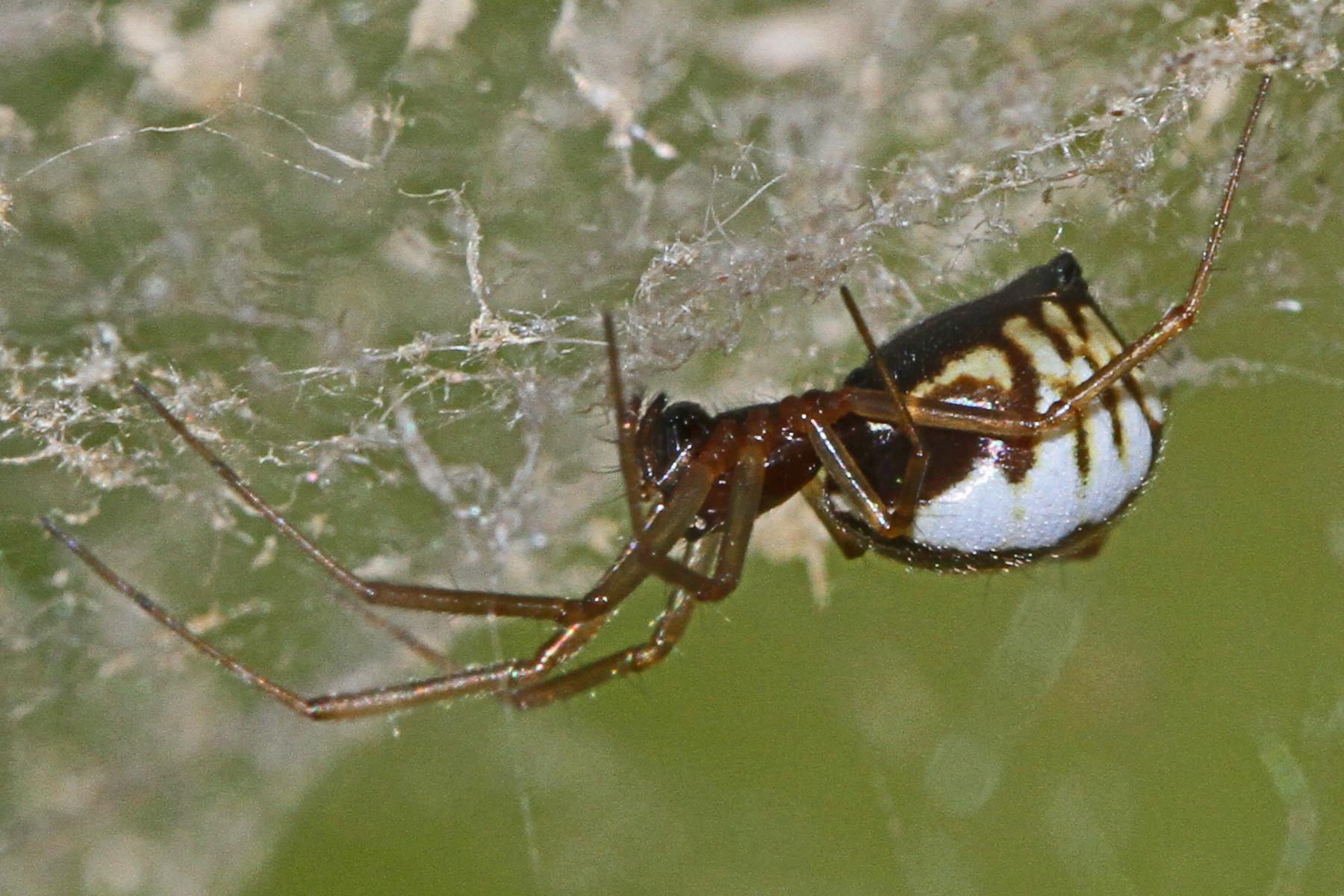
The Bowl and Doily Spider, scientifically known as Frontinella pyramitela, is a fascinating arachnid that commonly resides in gardens and forests across North America. This unique spider species has garnered attention for its distinctive web design, hunting techniques, and intriguing behaviors. In this article, we will delve into 14 fascinating facts about the Bowl and Doily Spider, shedding light on their incredible adaptations and intriguing lifestyle. From their intricate web structures to their peculiar mating rituals, these spiders offer plenty of excitement for nature enthusiasts and arachnid enthusiasts alike. So, let’s embark on a journey to uncover the secrets of the Bowl and Doily Spider and gain a deeper understanding of these remarkable creatures.
Key Takeaways:
- Bowl and Doily Spiders are skilled hunters with a unique web structure that helps them blend in and capture prey. They have vibrant-colored abdomens and exhibit interesting social behaviors, making them fascinating creatures to study.
- Female Bowl and Doily Spiders are dominant and provide maternal care, guarding their eggs until the spiderlings hatch. These nocturnal spiders have long lifespans and build individualistic webs, showcasing their adaptability and uniqueness in the arachnid world.
Unique Web Structure
The Bowl and Doily Spider, scientifically known as Frontinella pyramitela, gets its name from the shape of its web. It creates a bowl-shaped web with a delicate doily-like structure underneath, providing it with a distinctive appearance.
Stealthy Predators
These spiders are skilled hunters that build their webs near the ground. Their unique web structure helps them camouflage and blend into their surroundings, making it easier to capture unsuspecting prey.
Wide Distribution
Bowl and Doily Spiders can be found in various parts of the world, including North America, Europe, and Asia. They are adaptable creatures that can thrive in different climates and environments.
Female Dominance
Like many spider species, female Bowl and Doily Spiders are usually larger and more dominant than males. They take the lead in web-building, hunting, and mating.
Amazing Web Construction
The intricate web of the Bowl and Doily Spider is not just visually appealing, but it also serves a practical purpose. The bowl-shaped upper part is used for prey capture, while the doily-like lower part provides a platform for the spider to rest and protect its eggs.
Prey and Diet
These spiders primarily feed on small insects such as flies, mosquitoes, and gnats. Once caught in the web, the spider immobilizes its prey with silk and then injects venom to subdue it before feeding.
Mating Rituals
When it comes to mating, male Bowl and Doily Spiders have to approach the female’s web with caution. The females may attack and consume potential mates if they are not deemed suitable. Successful mating often involves elaborate courtship rituals.
Maternal Care
After mating, the female Bowl and Doily Spider lays her eggs within a silken sac and protects it. She guards the sac until the spiderlings hatch, providing them with necessary protection until they are ready to venture out on their own.
Colorful Abdomens
The females of this species are known for their vibrant-colored abdomens. They can vary in color from bright orange and yellow to green and black, adding to their visual appeal.
Social Behavior
Bowl and Doily Spiders exhibit interesting social behaviors. They are sometimes found living in colonies, with multiple spiders sharing the same web structure. However, they may still compete for prey, exhibiting territorial behavior.
Long Lifespans
In favorable conditions, Bowl and Doily Spiders can survive for up to two years. This relatively long lifespan for a spider allows them to establish themselves in their environment and reproduce multiple times.
Natural Predators
Just like any other creature, Bowl and Doily Spiders have their fair share of predators. They may fall victim to predators such as birds, wasps, and other spider species.
Individualistic Webs
While Bowl and Doily Spiders may live in close proximity to each other, each individual spider constructs its own unique web. This behavior aids them in minimizing competition for prey and resources.
Nighttime Hunters
Bowl and Doily Spiders are primarily nocturnal, hunting for prey during the nighttime hours. Their specialized eyesight and web structure assist them in capturing food in the darkness.
These 14 fascinating facts about Bowl and Doily Spiders showcase the uniqueness and adaptability of these creatures. From their intricate web structures to their colorful abdomens, these spiders are truly remarkable members of the arachnid world.
Conclusion
In conclusion, the bowl and doily spider, also known as the Frontinella pyramitela, is a fascinating creature with unique characteristics and behaviors. From its intricate web structure to its unusual mating rituals, these spiders have captivated researchers and nature enthusiasts alike. They play an important role in maintaining ecological balance by preying on other insects, and their presence in various ecosystems is crucial.Understanding more about the bowl and doily spider sheds light on the incredible diversity and adaptability of the animal kingdom. By continuing to study and appreciate these remarkable creatures, we can not only expand our knowledge of the natural world but also foster a deeper respect and appreciation for the intricate web of life that surrounds us.
FAQs
Q: Where can one find bowl and doily spiders?
A: Bowl and doily spiders are commonly found in North America, specifically in the eastern and central parts of the United States.
Q: Are bowl and doily spiders venomous?
A: While bowl and doily spiders do possess venom, they are not considered to be dangerous to humans. Their venom is primarily used to immobilize and subdue their insect prey.
Q: How big do bowl and doily spiders grow?
A: Bowl and doily spiders are relatively small, with females measuring around 4-6 millimeters in body length, while males are slightly smaller.
Q: What is the lifespan of a bowl and doily spider?
A: The lifespan of a bowl and doily spider is relatively short, usually lasting for about one year. However, the exact duration may vary depending on environmental factors and availability of resources.
Q: Do bowl and doily spiders migrate?
A: Bowl and doily spiders are not known for long-distance migrations. They typically stay within their localized habitats and establish their webs in areas where they can find a sufficient supply of prey.
Q: What other species are closely related to the bowl and doily spider?
A: The bowl and doily spider belongs to the family Linyphiidae, which is one of the largest families of spiders. This family includes many other species, such as sheet weavers, dwarf spiders, and money spiders.
Was this page helpful?
Our commitment to delivering trustworthy and engaging content is at the heart of what we do. Each fact on our site is contributed by real users like you, bringing a wealth of diverse insights and information. To ensure the highest standards of accuracy and reliability, our dedicated editors meticulously review each submission. This process guarantees that the facts we share are not only fascinating but also credible. Trust in our commitment to quality and authenticity as you explore and learn with us.


